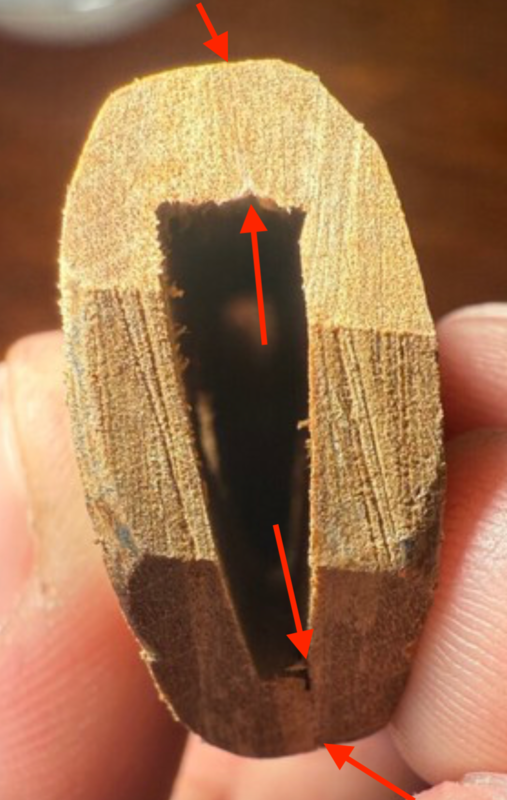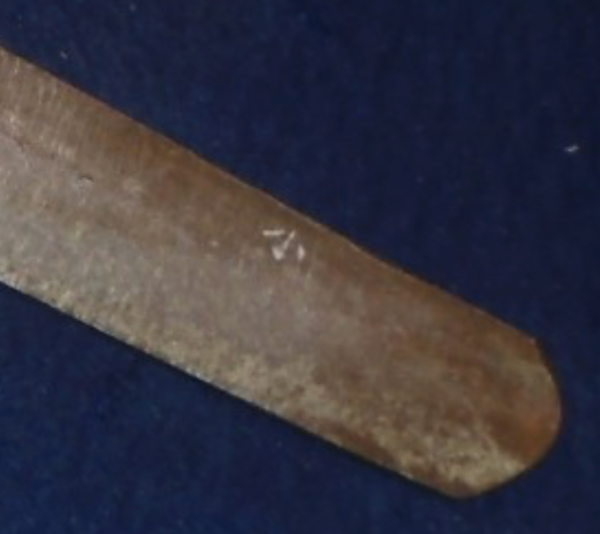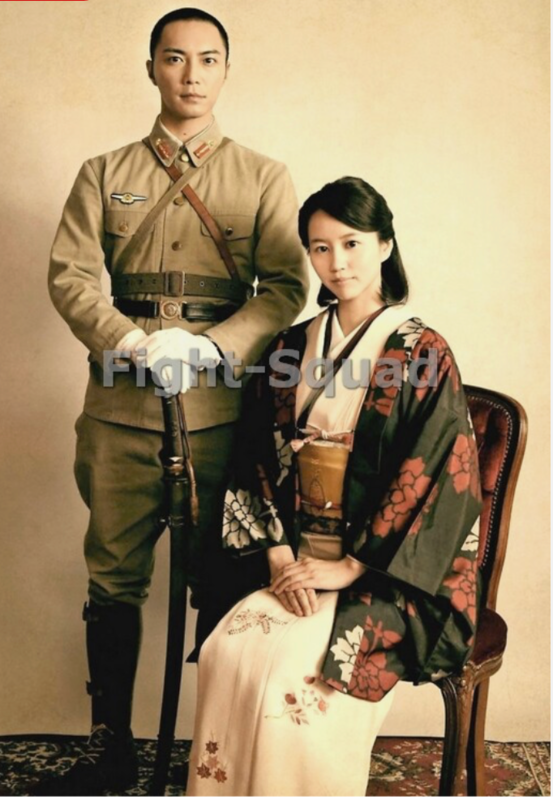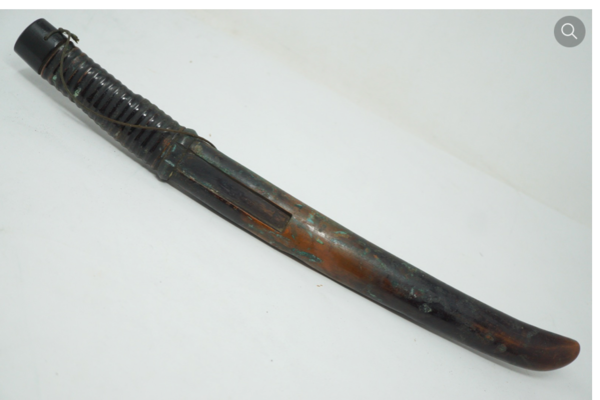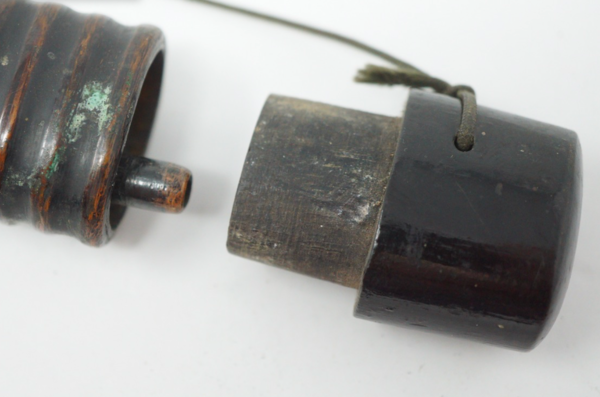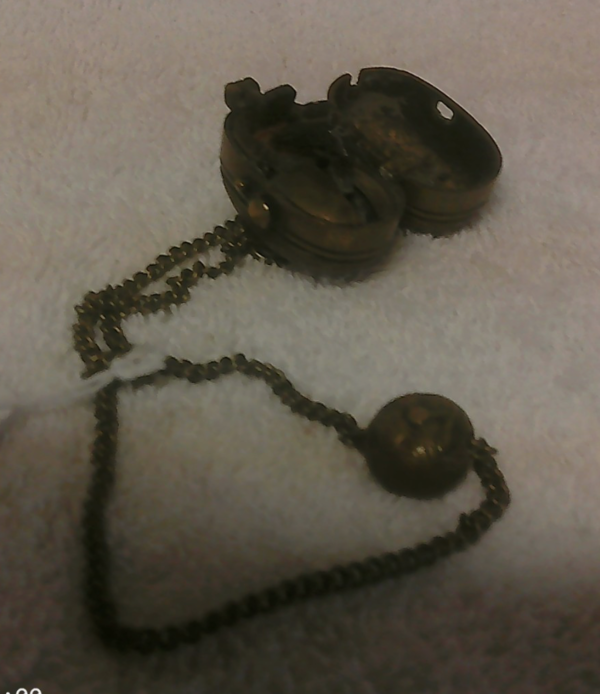
John C
Members-
Posts
2,549 -
Joined
-
Last visited
-
Days Won
17
Content Type
Profiles
Forums
Events
Store
Downloads
Gallery
Everything posted by John C
-
Agreed. I think someone had it out of the scabbard when they tripped and fell against a grinder - multiple times. John C.
-
Canvas cover with ink stamp on a type 94/98. Pink curling ribbon probably not original. https://www.ebay.com/itm/187827346096? John C.
-
Help with aprox. katana value.
John C replied to TheGalos's topic in Auctions and Online Sales or Sellers
Galo: The problem with valuations is that it is completely subject for anything other than the really big names. Condition, rarity, historical significance, provenance all play a part. The obvious thing to do would be to research that particular smith auction prices (Ebay MIGHT have some but you need to look at Completed auctions and not for sale items). If you can't find anything that way, look for information about the smith in reference material and see how he was rated. This would give you an idea of importance (i.e., value). Barring that, something is actually worth what someone is willing to pay for it. That's one reason website auctions carry such high prices. If the sword means something to you, keep it and enjoy it. Maybe even have it polished. If it doesn't, then list it with a high reserve and see what kind of offers you get. John C. -
Looking for help with Katana identification
John C replied to TheTinkerBard's topic in Translation Assistance
Just a general note. Some smiths changed their style frequently, which makes it hard to compare. For example, the "Kane" in the pic below are all from the same smith: Nakata Kanehide - 1938 (top left), 1944 (bottom left), 1945 (top right), and 1972 (bottom right). They are different from each other, however they all contain the elements of the "proper" kanji. John C. -
I think the wood insert is definitely a 2 piece construction. It's just a lot easier to make that way. This seems to have seams that are offset, which is what I would expect. John C.
-
@Bruce Pennington A Masayasu with what looks like a ko stamp on the nakago (I'll probably get corrected on that so please take it with a grain of salt). https://www.ebay.com/itm/357998375327? John C.
-
Just quoting the item description. John C.
-
I found this pic for sale on ebay. Not a big deal, however the sword is an interesting configuration. Thanks and credit to Chris (vajo) for identifying the various parts. We often discuss whether or not a particular arrangement of mounts and blade was war-time or post-war. Assuming this pic is indeed period, the sword is a mixture of 1) unlacqured RS ito wrap, 2) type 98 saya, and 3) NCO leather tassel. Maybe he wanted to look more stylish than he could afford? John C.
-
Shaun: I saw one recently that had fake concentric lines. What gave it away was how perfectly spaced they were. That and the overall quality. John C.
-
Unknown significance of chevron design on Sarute
John C replied to PNSSHOGUN's topic in Military Swords of Japan
Yes. It was a bit hard to tell. I was looking at the attached sarute barrel and, what appeared to me at least, to be an open tsuba. But I'm probably wrong so I withdraw the question. John C. -
Looks like the inspector stamp was on the blade side opposite the serial number, with the Tokyo and date stamps on the guard, through around 13,000. Then all the stamps moved to the guard. Of course, this is based on a very limited sample size and may not be completely accurate. John C.
-
Unknown significance of chevron design on Sarute
John C replied to PNSSHOGUN's topic in Military Swords of Japan
Also a type 94. Is there a connection between the 94's and this sarute? Both just used early on, I suspect. John C. -
I'll get you started: The column on the far right is difficult to read, however it appears to be a date: Showa 32 (1957) perhaps? Number 106. John C.
-
No. Nothing like that. In fact, I thought for a moment that a digit might have been ground off, however the gap between the blade and latch is only slightly wider than what I would expect. John C.
-
Thanks, Sam. That's a new one for the list. Up to 42 examples. Interesting that the seller lists it as "WW1." I assume he means Japan-Russo war (~1905) and even then it wasn't widely used with the introduction of the type 32. John C.
-
Looks like a few techniques went into the construction, repousse, chasing, and applique. Interesting detail where the maker used only one rivet to attach the butterfly wing hinges to keep the Japanese asthetic. John C.
-
-
Hello folks: I've been interested in bokuto for awhile, however I am not very familiar with tea ceremony swords (chato). The seller lists this as a copper container in the shape of a sword. I was wondering if anyone has an opinion on whether or not this would be considered a bokuto or chato. Thank you, John C.
-
Just heard back from the seller on the bone hanaire. He says it is indeed the shape of a hanaire but believes it is a netsuke representation due to its size (about 8cm long). John C.
-
Katana surrendered by Admiral Fukudome?
John C replied to Pincheck's topic in Military Swords of Japan
Jack: I think you are right to be suspicious. I can't say which sword was surrendered and by whom, however this sword has very cheap late-war fittings with missing parts. I'm not 100 percent sure but I believe naval tassels were solid brown. Doesn't seem like an admiral's sword to me. Just my two cents. John C. -
Piers: I would love to have one but this is too rich for my blood. The bad pictures and use of the word "minty" to describe it gives me pause in any case. John C.
-
Jean: Were they meant to hold water? The top of the pieces certainly look like a hanaire but these don't have bottoms and wouldn't hold water. John C.
-
A snaphaunce tinder box on ebay. Seller says it's brass and wants 2,400 dollars! Aren't most of these made from iron? Photos are just dark and blurry enough to obscure details. https://www.ebay.com/itm/127535806287 John C.





